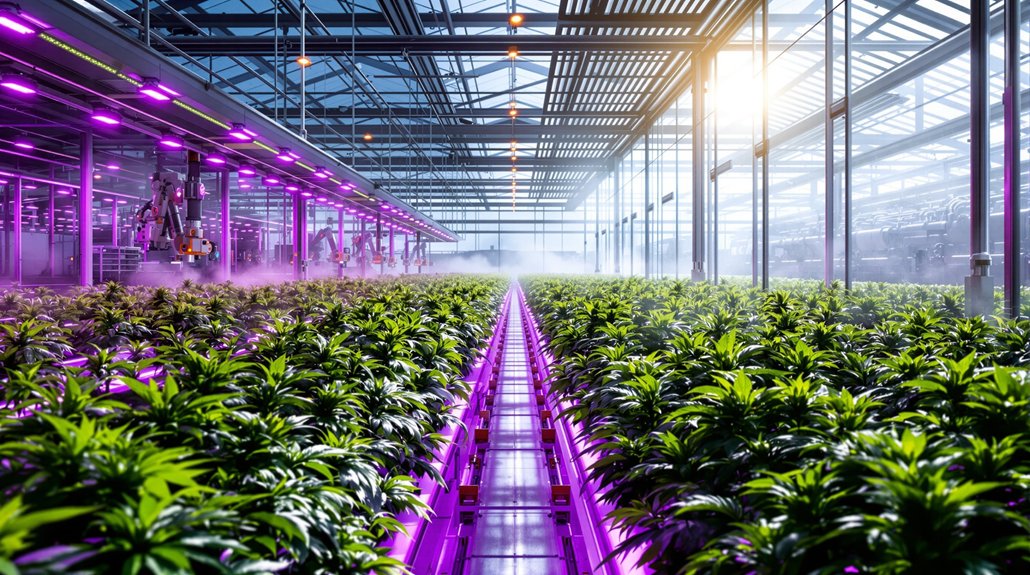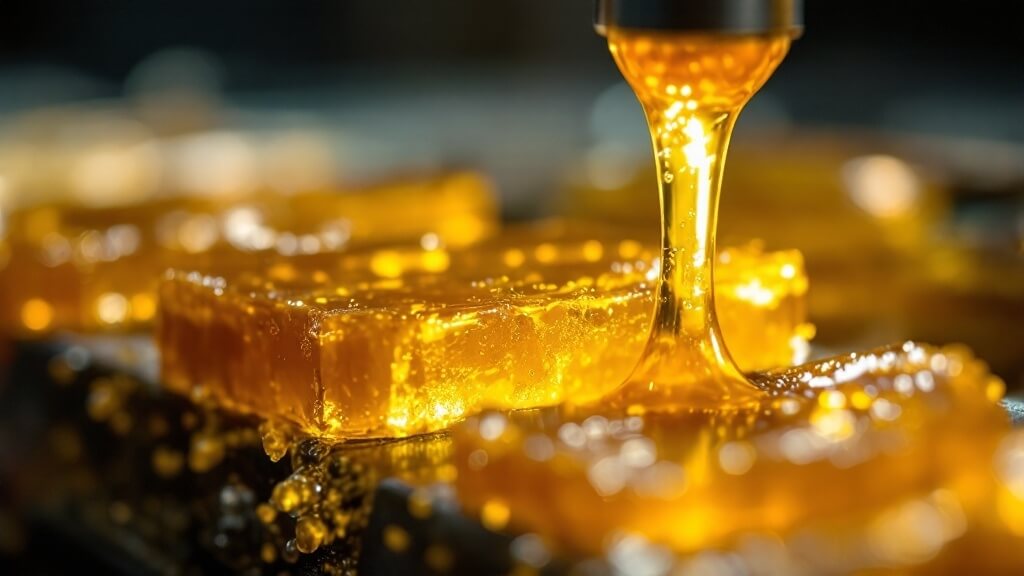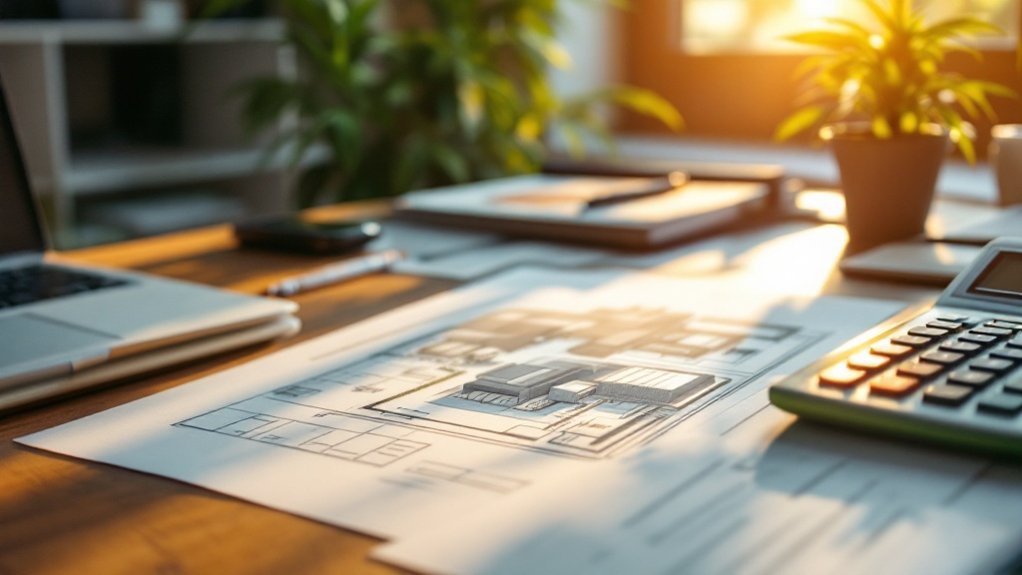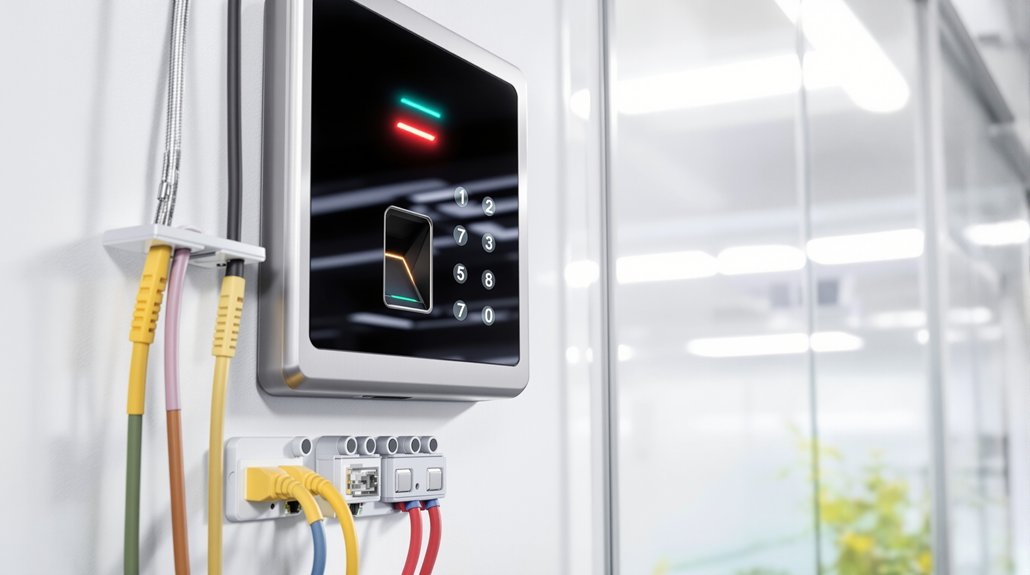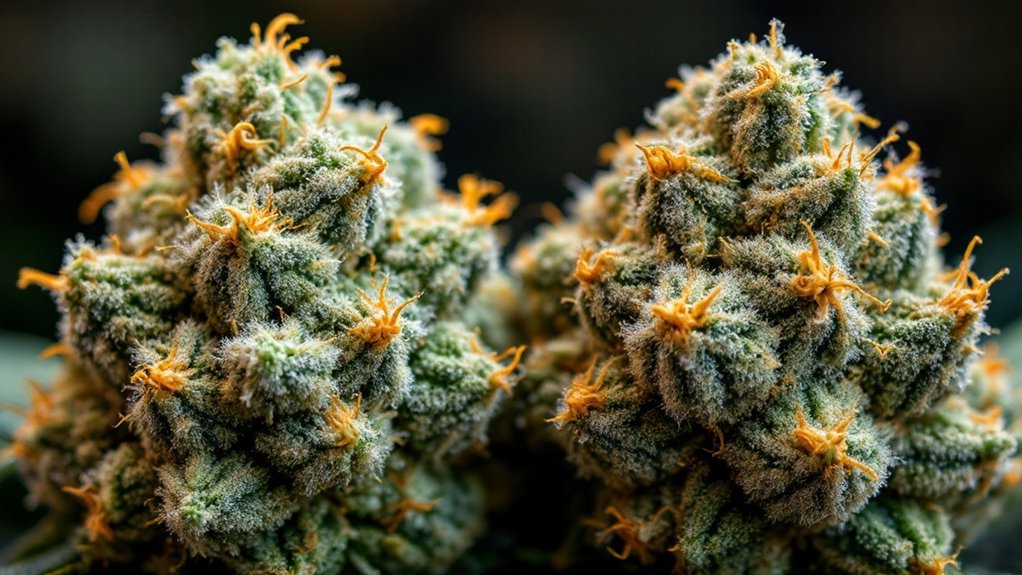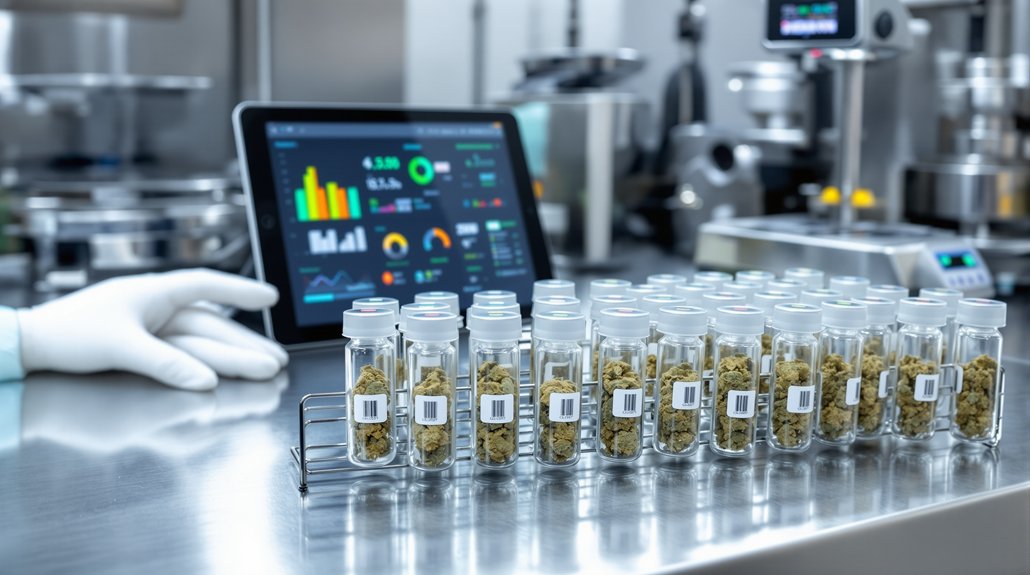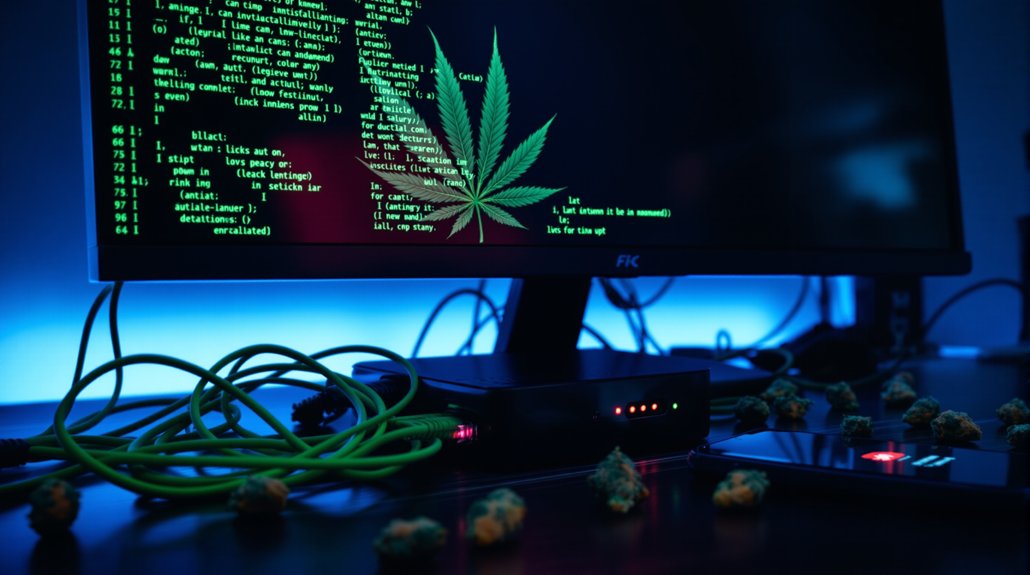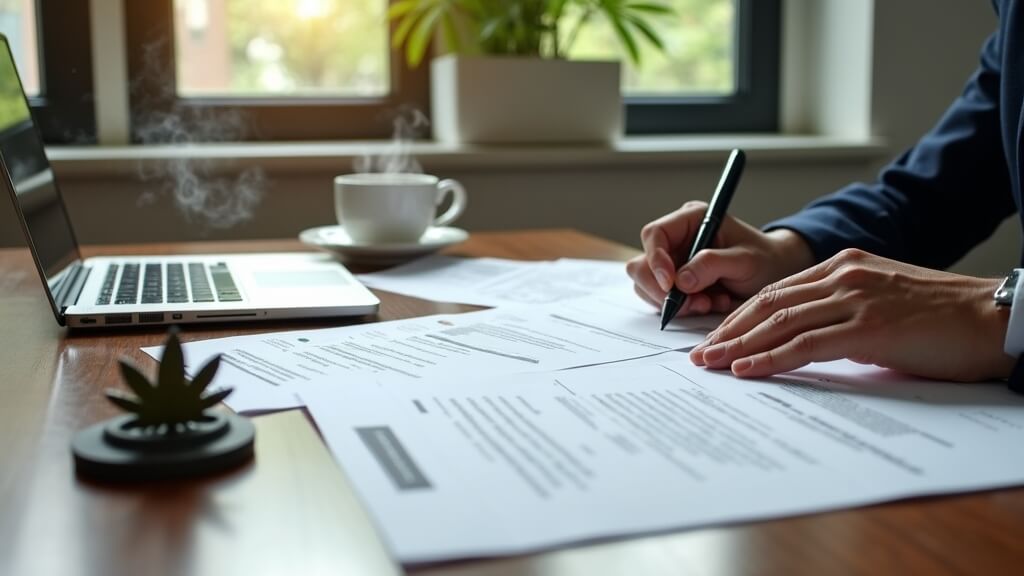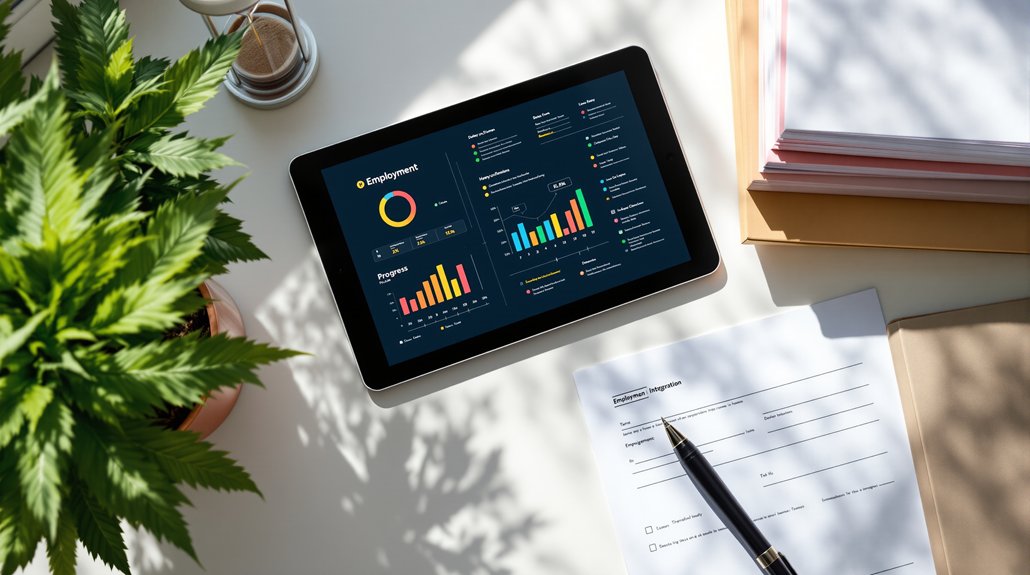LED upgrades deliver 40-60% electricity reductions for indoor grows, with 400W LED units matching 600W HPS performance while cutting cooling costs. Glass Pharms achieved carbon-neutral operations by co-locating their facility with an anaerobic digestion plant that converts food waste into electricity, providing grid independence and utilizing waste heat for climate control. Their integrated model requires only 40% of conventional power consumption while maintaining 12-16 week growing cycles through optimized environmental controls and robotic systems that maximize efficiency across all operational aspects.
LED Technology and Energy-Smart Design Strategies That Deliver Measurable Cost Reductions for Indoor Growing Operations
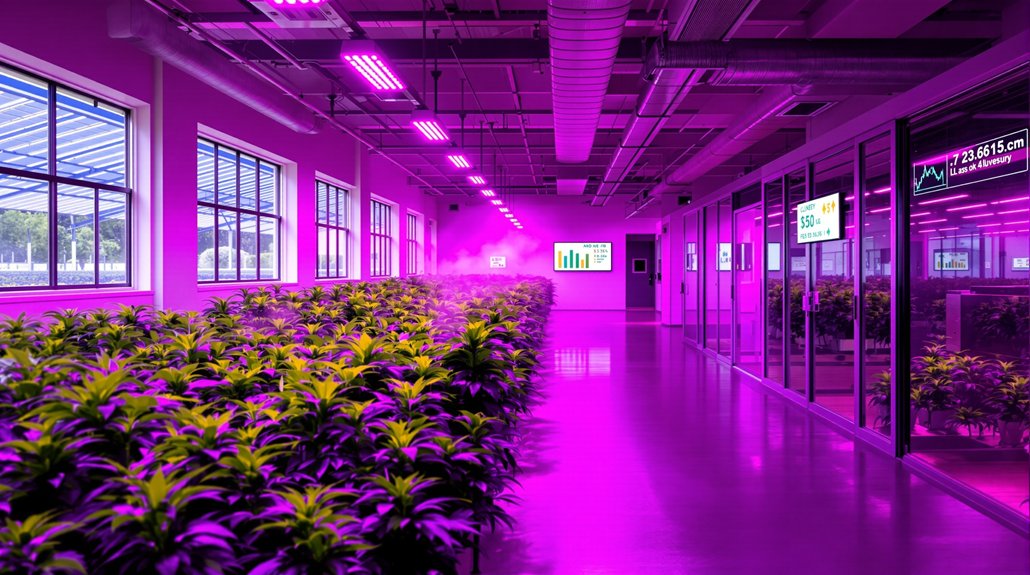
While traditional high-intensity discharge (HID) and fluorescent lighting systems have dominated indoor growing operations for decades, LED technology now offers compelling advantages that translate directly into measurable cost reductions and improved operational efficiency.
LED grow lights convert 40-50% of electrical energy into usable Photosynthetically Active Radiation, while consuming 40-60% less electricity than conventional systems. Modern full-spectrum LEDs can replace higher-wattage fixtures, with 400W LED units matching 600W HPS performance while maintaining yields.
The notably lower heat output reduces air conditioning requirements, creating additional savings. Smart LED systems optimize run times and intensity during different growth stages, further reducing energy consumption. These efficiency gains directly impact monthly utility bills, making LED upgrades a strategic investment for commercial indoor growing operations.
The directional focus of LED grow lights eliminates the need for additional equipment like reflectors or light movers, saving both money and space for indoor growing facilities. The efficiency of LED grow lights is often quantified in terms of PAR output per watt of electricity consumed, providing growers with a clear metric to evaluate the effectiveness of their lighting investment.
When integrated with proper climate control equipment, LED systems can help maintain optimal growing conditions while minimizing energy consumption across the entire facility.
Glass Pharms’ Carbon-Neutral Model: Leveraging Anaerobic Digestion and Renewable Integration for Sustainable Indoor Agriculture
Beyond traditional energy efficiency improvements, Glass Pharms has pioneered a revolutionary approach to indoor agriculture that achieves true carbon neutrality through integrated renewable energy systems. The company operates a 2.5-hectare glasshouse facility directly co-located with an anaerobic digestion plant that converts food waste into electricity.
This innovative setup provides complete energy independence from the grid while utilizing waste hot water for heating and cooling throughout the greenhouse operations. Compared to conventional indoor grows that average 128 kWh per square foot of canopy area annually, Glass Pharms’ model dramatically reduces energy consumption.
The facility’s AI-controlled climate systems require only 40% of the power compared to conventional indoor growing operations. Robotic plant movement systems optimize light exposure and nutrient delivery, creating accelerated growing cycles of 12-16 weeks. The company has eliminated chemical pesticides entirely from its cultivation process, relying instead on biosecurity measures and controlled environmental conditions. This breakthrough could inspire similar advancements in other energy-intensive agricultural sectors seeking to reduce their environmental impact. Through verification processes, Glass Pharms has achieved net carbon-negative status, using more renewable resources than carbon emitted, establishing a replicable model for sustainable indoor agriculture.
FAQ
How Long Does It Take to Recoup Initial Investment Costs?
Investment recovery timelines vary drastically by technology type. LED upgrades typically recoup costs within 1.5 to 3 years through energy savings of 30-75%.
Smart energy controls deliver payback in under 2 years, while extensive HVAC and building improvements require 2-6 years.
Renewable energy systems need 5-10 years for full recovery, though government incentives can accelerate this by 1-3 years.
Anaerobic digestion represents the longest timeline at 5-12 years.
Can Smaller Indoor Growing Operations Achieve Similar Carbon-Neutral Results?
Smaller indoor growing operations can achieve carbon-neutral results through strategic combinations of LED lighting, renewable energy integration, and efficient resource management practices. While they may lack access to large-scale anaerobic digestion partnerships, small growers can utilize compressed CO₂ from fermentation, install on-site solar systems, and implement water-efficient hydroponic systems.
Success requires combining multiple approaches, including energy-smart design, organic cultivation techniques, and participation in local renewable energy cooperatives to offset grid electricity consumption.
What Are the Maintenance Requirements for Anaerobic Digestion Systems?
Anaerobic digestion systems require thorough maintenance across mechanical, operational, and safety areas. Valve and pipe leak inspections occur every 6-12 months, while pump clearing happens every 3-6 months.
Daily temperature monitoring maintains ideal microbial conditions, and pH levels must stay between 6.5-8.5. Routine sludge removal every 1-2 years prevents efficiency losses.
Operations typically need 1-2 additional staff members for maintenance tasks, emergency protocols, and ongoing system monitoring to guarantee safe, effective performance.
How Do Regional Electricity Rates Affect the ROI Calculations?
Regional electricity rates greatly impact ROI calculations for energy upgrades. Higher rates in areas like California and the Northeast accelerate payback periods for LED retrofits, which typically save 50-70% versus traditional systems.
Lower-rate regions extend payback times, reducing investment incentives. Dynamic pricing schemes, demand charges, and utility rebates further influence economics. Facilities in high-rate markets often justify rapid upgrades, while low-rate areas may delay implementation despite identical energy savings percentages.
Looking for more information about commercial growing? Check out our Guide to Cannabis Cultivation: Technology & Innovation.
